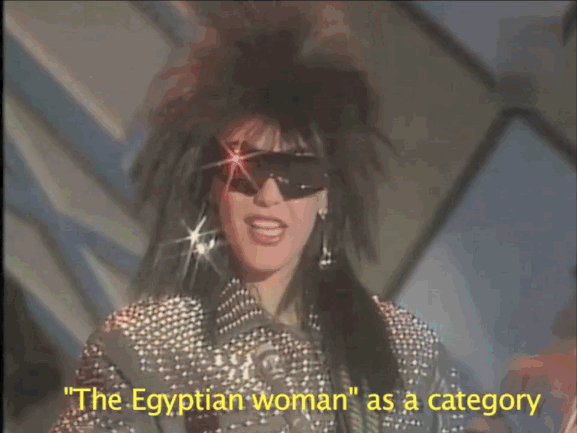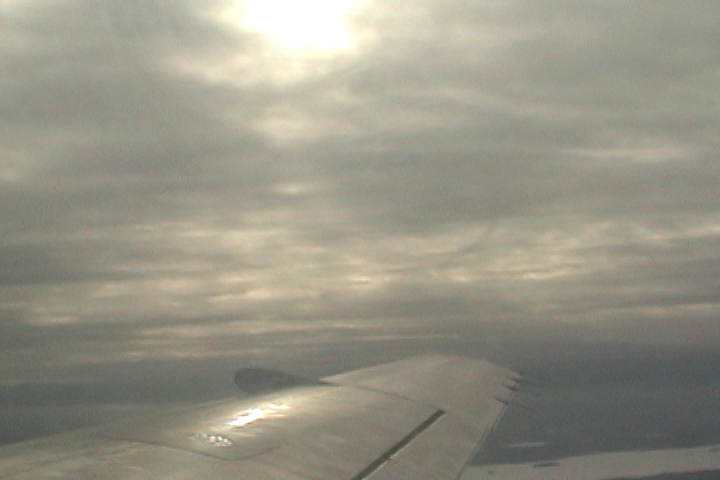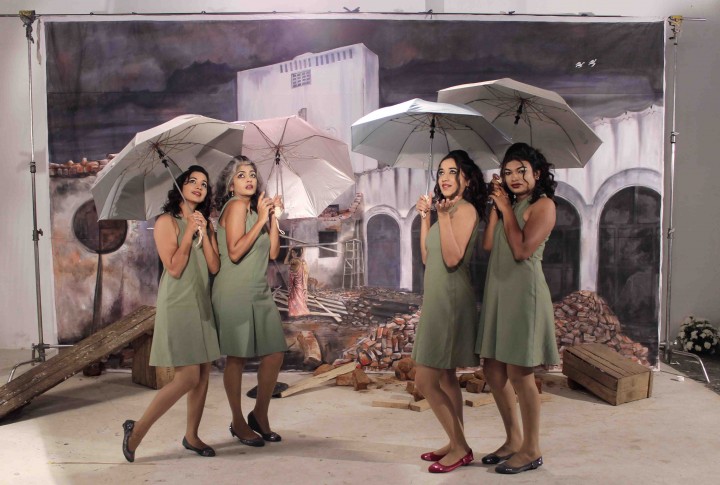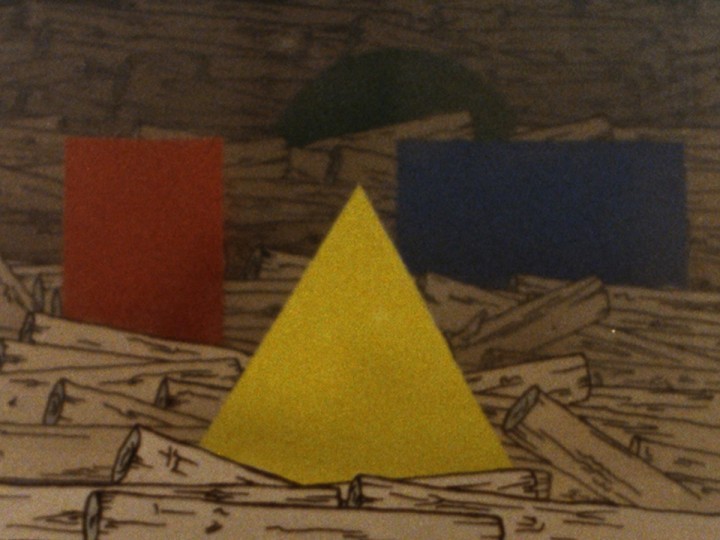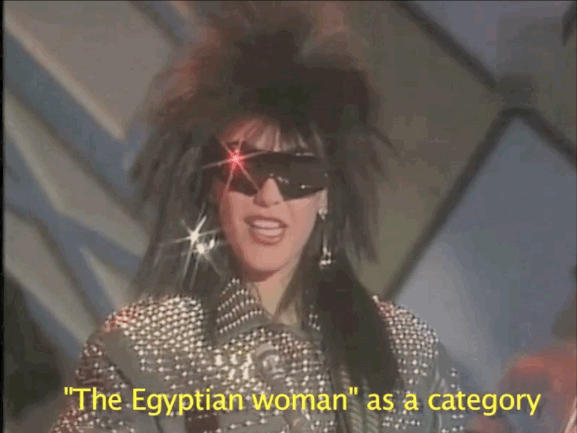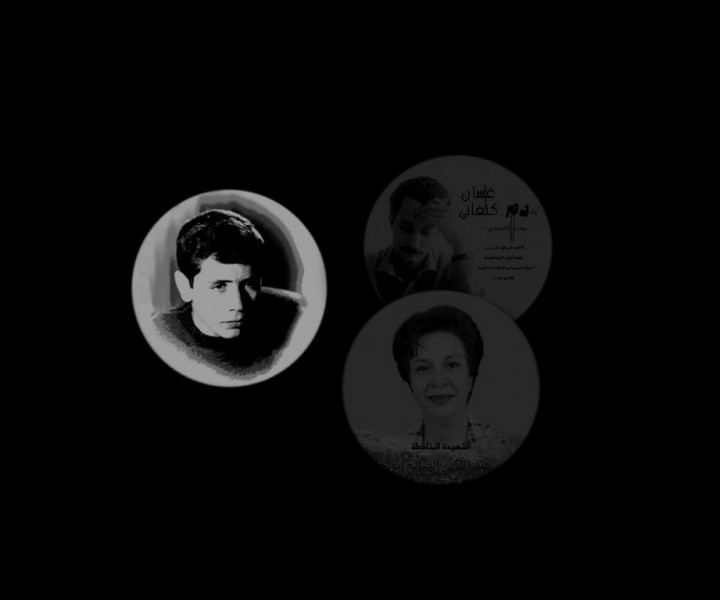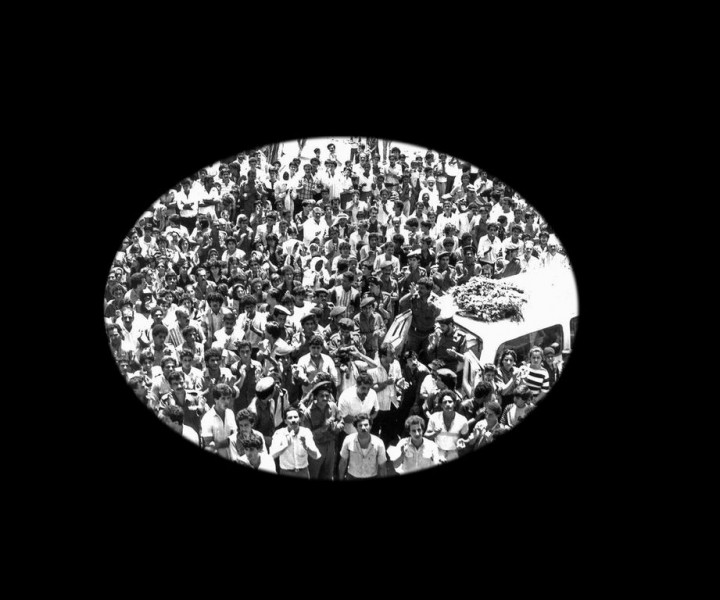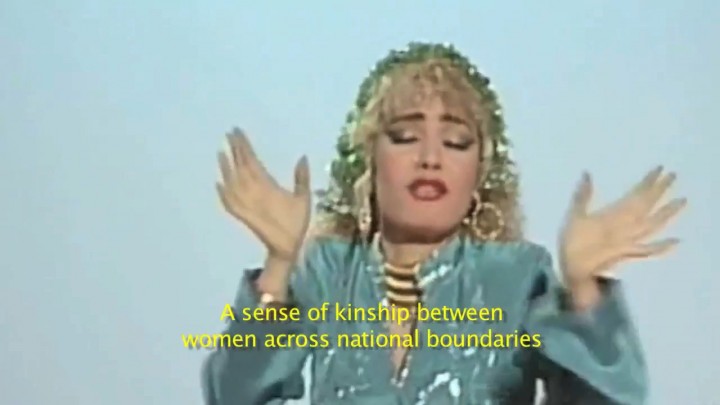Part of Fall 2013
In 2013, Pleasure Dome’s New Toronto Works presents a selection of
digital films that propose questions of voice in relationship to space.
Ranging through aesthetic decisions that offer modes of performativity
as vehicles for narration, these works plot gender, geography, optics,
utterance, and trace, in the expanded field of the moving image.
This expanded field considers digital media work a specific site — both
in terms of its technological methodologies, and in relationship to its
visual narration of space. Rosalind Krauss’ seminal 1979 text, Sculpture
in the Expanded Field, makes a structural intervention into the
patriarchally-shaped logic that has traditionally enunciated the canonical
taxonomies of aesthetic movements. Krauss cracks open the
discipline of Art History by doubling the diagrammatic formula for
modernist sculpture — not architecture + not landscape — as a means
to generate theoretical possibilities that could narrate the kinds of
site-specific material production enacted by postwar American artists.
Krauss wonders about the ‘conditions of possibility’ that brought about
the shift that she makes legible, creating herself the condition of possibility
for a consideration of the relationship between the abstract structure
of aesthetic mapping and a relational dimension. In doing so, she
literally re-frames enunciatory structures of cultural production, creating
a space for a counter-hegemonic arrangement of voices.
Space is a condition of possibility for voicing: a material and conceptual
setting that creates architectures for the production of sense. The
various architectures of production generate strategies of spacing that
expand and collapse structures of address.
Narration can be understood as the performance of sensory articulation
in relation to a particular context. Narration, in the expanded sense,
occurs as a linguistic and visual phenomenon that structures the
artwork in some kind of continuous tense. It traces a line. Voice, the
medium for narration, is a trace of the body. As a figure, the narrator
oscillates between a visible speaking subject, a disrupted or disembodied
voice, and a bodily trace that signals their own absence.
Presented here are strategies that range from urgently political experimental
documentary practice, to joyous queer re-imaginings of mass
media imagery, to sustained observational tasks at the edge between
figuration and abstraction. (Cressida Kocienski & Francisco-Fernando Granados)
NEW TORONTO WORKS 2013 PROGRAM:
Installations:
Nobuo Kubota, Overwriting & Overvoicing, 20:40
OVERWRITING: (First known use of overwriting –
1658)
1. To write on top of other writing.
2. Destroy (data) by entering new data in its place.
3. To get rid of information by replacing it with
other information.
OVERVOICING: (The audio component)
1. To record (new data) by recording new data over
it.
2. To record (new data) on top of already stored
data, thus destroying the old data. (The overvoicing
in this work is achieved by a “loop/phrase
sampler”, a digital pedal that has the ability to
record and re-record another track on top of it ad
infinitum.)
Willy La Maitre, Occupy Image, 13:00
The 3D video installation opens with images taken
during Occupy Wall Street in Zuccotti Park in
October 2011. The title Occupy Image is a play on
words which refers to how spaces are produced by
images and the passive occupation of these spaces
by the contemporary spectator/producer.
The sequence of dissolving images progresses
from the protest images into seemingly unrelated
imagery. Parallax, referred to in stereographic 3D
video relates to a simulation of human sight. A
presentation of the images from two aligned
cameras produces a depth illusion to the similarly
separated eyes of a viewer. This sense of parallax
presumes an object in coherent Cartesian space.
The meshing and sequential dissolving of varying
perspectives and disparate spaces in Occupy
Image destabilizes the illusion and expectation of
space. What is expressed in its place is an
expanded sense that parallax can have to depth.
Where depth is a negotiation of difference to be
perceived by combining the here with a formally
unrelated there, and there and so on. The merging
of spaces entwine masses with voids. Bound by
organic lines, the unfolding juxtapositions present
viewers with an experience of reading space that is
vivid as our natural sight is but selective and
associative like our memories, imaginations and
digital exchanges.
Screening:
Oliver Husain, Item Number, 16:00
Two minutes before the show. An actress is waiting
for her performance. Time is running out. The
mirror shows for what or whom. A very particular
kind of artificiality loses its melodramatic nature
and re-discovers it at the moment when the space
beyond the stage becomes the stage. And because
there is no beyond, the film releases its protagonist.
Jean-Paul Kelly, A Minimal Difference, 05:10
Referencing pictures from Kelly’s ongoing archive
of photographs and clippings culled from Google,
flickr, and photojournalism, A Minimal Difference
conflates the material structure of images with the
abstraction of a personal experience of seeing.
Rehab Nazzal, Target, 04:00
Target consists of tens of still photographs of
posters and found portraits of Palestinian leaders,
intellectuals, and activists who were assassinated
inside occupied Palestine and across the world.
The images are paced in a way that allows the
appearance of each image for a fraction of a
second before it disappears from view leaving a
permanent trace or transparent layer, conveying
the way the life of these individuals was cut short in
secret and un-admitted violent operations. On a
black screen, each image is masked in a circular
shape, similar to a rifle scope-lens. Traces of the
portraits accumulate creating at the end a ghostlike
single image across the screen, attesting to the
collective loss of the Palestinian people and to the
memory of those assassinated individuals. The
name, year and place of assassination of each
individual are rendered, on the same masked and
circular shape, in Arabic and/or English; these are
paced slower than the portraits.
Wanda Nanibush, Departures and Arrivals, 10:00
A lyrical story of entry into foster care inaugurating
a life of arrivals and departures.
Rita Camacho Lomeli, Yesterday, 03:50
I scrutinize the urban landscape with a magnifying
glass sheet to get close enough to “reality” and
distant at the same time. With this device I get an
upright form of representation of the surroundings.
I understand the properties of the material,
the magnifying glass sheet to create and transform
matter in a composition that implodes or explodes.
This visual strategy maintains a deep closeness
and symbolic distance to “reality,” which I use
looking for space of possibility. Maurice Merlau-
Ponty argues the ‘upright’ is a relationships
dependent upon the fixed points chosen. He
questions what the words ‘right way up’ or ‘down’
mean; if one and the same person can view
successively from various positions. If ‘top’ and
‘bottom’ are anchoring points from which they
derive their stability, suggesting to us the constitution
of a new order of things or an order that we
forgot how to access.
The central concern of this project is to intervene
and question the general distribution of ways of
seeing and its relationship to ways of doing,
making and being.
Logan MacDonald, Terre Neuve: LANDSCAPEVIDEO, 01:44
Terre Neuve embodies a formalist approach to creating video, by looking at
the material and objective-nature of video as a
medium. The work makes an inexcusable
reference to Michael Snow’s formal experimental
film La Région Central (1971). However, in contrast
to the hallmarks of formal artworks – this piece
explodes with sexual innuendos and toys with the
politics of the time and landscape, by highlighting
imagery of Newfoundland’s evaporated fishery.
This work is completely subjective, it’s all about the
politics of getting fucked.
Nahed Mansour, Satellite Telefizyoon, 04:44
Satellite Telefizyoon takes all of its visual content
from a popular 1980’s Egyptian television quiz
show featured during the 30-days of Ramadan
titled Fawazeer (Riddles). The 1988 series, Hawl El
Alam (Around the World) featured the iconic
singer/ actress Sherihan who would appropriate the costume, song, and dialect of an unnamed
country and conclude by asking her audience to
guess which country she was representing.
Focusing on the positioning of Egyptian women
in relationship to their European, South American,
Asian, and African sisters, Sherihan quotes
academics Laura Bier, Timothy Mitchell, and
Anthony Shay to provide a brief history of Egyptian
conceptions of modernity from the 1950-80’s.
Parallel to the contrast between academic texts
and 1980’s kitsch imagery, the juxtaposition of
early products of cultural globalization with
post-colonial and non-aligned rhetoric creates a
visual dialogue addressing Egyptian Independence,
neo-colonialism, and post-modernity.
Satellite Telefizyoon (the phonetic translation of
Satellite ‘Television’ in Arabic) highlights the
willingness of Egyptian media to engage,
reproduce, and distribute stereotypically racist
depictions of other cultures in order to highlight
the state’s modernizing project in the 1980’s. This
project continues today on popular state and
satellite television stations.
Sky Fairchild-Waller, Les Motes et les Choses (The Words and The Things), 01:55
This lens-based experiment draws on Michel
Foucault’s Les Mots et Les Choses, Ernest
Hemingway’s To Have and Have Not, and Samuel
Beckett’s Not I.
Eshan Rafi, cultural practice, 06:54
cultural practice is a split-screen video performance
that explores gender transgression, desire
and voice through the acts of hair removal and
poetry recitation. The three figures in the work are
my mother, my sister, and I. The work considers
how gender and desire have been shaped through
colonial histories in the writings of rekhti poet
Insha Allah Khan Insha* and Thomas Moore**, and
how queerness is negotiated on our bodies and
within our families in the present day.
* Rekhti poetry was Urdu poetry written by men in
the feminine voice and performed in drag (18th-
19th century) ** Text from a poem by Thomas
Moore expresses his desire for an East Indian
woman
Faraz Anoushehpour, A Double Self Portrait, 02:31
Double-Self Portrait is a double channel video
installation. Constructed as a series of scenes set
in the neighborhood of Sheppard and Avondale at
night, the video is an attempt to exploring, registering
and understanding the everydayness of the site
at night. Our attention is constantly diverted from
the object to the subject, from the background to
the foreground. The use of two screens each
showing a perspective, allows our gaze to travel
through the space of the film.
Nathalie Quagliotto, Swing Secrets, 13:27
I work with childhood objects in my practice. I
focus on shifting the social significance of the
object and the space around the object in my work.
Swing Secrets was produced during a recent
residency at “Le Labo” francophone media art
centre in Toronto, Ontario. For my residency, and
with the assistance of the team and equipment at
“Le Labo”, I created a video on deviant activities
and behaviors in a public playground at night.
Focusing on the swing set, I used video to capture
the illicit nature of the environment of this
otherwise innocent object. The playground reveals
itself as a site of secrecy, maturity, and trespassing,
hidden in the darkness. The video explores five
stereotypical playground night scenes: a drug
scene, a love scene, a smoker scene, a group party
scene, and a fight scene.
Rehab Nazzal, Mourning, 04:30
Mourning is a video based on an archival footage of
a public protest during a funeral of an assassinated
Palestinian leader. The video intends to view
a past event through a contemporary lens. It has
affinity with the present, as it resonates with
YouTube videos of protests taking place throughout
the Arab streets and the global occupy
movement. The sound of Mourning is deliberately
muted. This pause of the sound on a moving
image intends to question the denial of the
Palestinians struggle to overcome the Israeli
occupation, and also the silence surrounding
Israel’s violations of the Palestinians human
rights. The screen in this video is masked with an
oval shape that moves over the masses then
changes to circular shape, identifying certain
individuals. This form of representation invites the
viewer to enter the work, and exchange place with
the protesters in the video.
John Greyson, Green Laser, 15:00
In June, 2011, John Greyson joined a freedom
flotilla of 10 boats trying to sail to Gaza to break
Israel’s blockade of this Palestinian port. Green
Laser weaves together interviews with activists
and footage of the flotilla on the high seas,
pursued by the Greek coast guard. These
documentary scenes are inventively interwoven
with entomological hornet lore, Riverdance moves
and rewritten clips from Exodus (with a shirtless
Paul Newman) to explore questions of solidarity,
civil disobedience, queer activism and the growing
boycott movement.
Curators Bios:
Cressida Kocienski works with film, text and voice, to explore spatial production and modes of narration. She has an MA in New Media Production from LJMU, an MFA in Art Writing from Goldsmiths, and is currently researching a PhD in Architecture at the University of Sheffield, examining modes of narration in complex representations of site.
She collaborates with architects Nishat Awan and Phil Langley as OPENkhana, with Suzanne Harris-Brandts as O[S]R, and is co-editor of experimental publishing platform The Institute of Immaterialism. She was filmmaker in residence with DAAR in the West Bank in 2011. She has worked collaboratively within Art on the Underground; James Taylor Gallery; South London Gallery; ICA, and Resonance FM. Her films have been screened at the Benaki Museum, Athens; FormContent, London, and Pleasure Dome and TSV, Toronto. She has performed at Whitechapel Gallery, London; Tenderpixel, London, and FADO / XSPACE, Toronto. She has recently completed a filmmaking residency with the British Council in Turkey, and is currently working on a film about the social and economic formations that crystallise around wild fires in Unorganized North Algoma, supported by Toronto Arts Council.
Francisco-Fernando Granados is a Guatemalan-born, Toronto-based artist, writer, curator and educator. He has performed and exhibited nationally and internationally in galleries, museums and artist-run spaces including the Vancouver Art Gallery, Darling Foundry (Montreal), Ex Teresa Arte Actual (Mexico City), and the University of the Arts (Helsinki). His performative talks have been presented at The Hessel Museum (New York) and The Power Plant (Toronto); curatorial projects include performance programs for the LIVE Biennial of Performance Art (Vancouver) and FADO (Toronto). He currently works as a sessional faculty member at OCAD University and the University of Toronto Scarborough.
Artists Bios:
Faraz Anoushah Pour studied architecture at the
Architectural Association in London, UK before
moving to Canada to study Interdisciplinary
Master’s in Art, Media and Design at OCAD University.
His practice as a filmmaker looks at the
intersection of architecture, cinema and the city.
His current project, based in the city of Toronto, is
part of an ongoing research into the role of the
“cinematic” in the understanding of the built
environment.
Rita Camacho Lomeli is a Toronto based artist.
She has been working on performance based
projects concentrating on gift methodologies. Part
of her research focuses on iterations that mirror
waste by means of squandering time and autonomous
labour, emulating a progressive loss and
showing them as unnecessary acts. Rita has
served as a board member of various artist-run
centres and recently graduated from The Interdisciplinary
Master’s in Art, Media & Design program
from OCAD University.
Koerner Award-winning multidisciplinary artist
Sky Fairchild-Waller studied at the National
Ballet School of Canada before completing his
formal education at York University. His video and
performance work have been presented across
Canada, the USA, Italy, and Switzerland, and in
2011, the psychogeographic performance
intervention he created with Cara Spooner was
selected to represent North America at the
stromereien11 Performance Festival Zürich
biennale. His work has been published in Border
Crossings, the Existere Journal of Art & Literature,
Giornale dell’Umbria, and KATALOG, and he has
received support from the Canada Council for the
Arts, Die Schweizerische Post, Kunststiftung
NRW, the Metcalf Foundation, the Vancouver
Foundation, and the Royal Bank of Canada.
John Greyson is a Toronto film/video artist whose
shorts, features and installations include: Fig
Trees (2009, Best Documentary Teddy, Berlin Film
Festival; Best Canadian Feature, Inside Out
Festival); Proteus (2003, Best Film, Diversity
Award, Barcelona Film Festival; Best Actor,
Sithenghi Film Festival); The Law of Enclosures
(2000, Best Actor Genie); Lilies (1996 – Best Film
Genie, Best Film at festivals in Montreal, Johannesburg,
Los Angeles, San Francisco); Un©ut
(1997, Honourable Mention, Berlin Film Festival);
Zero Patience (1993 – Best Canadian Film,
Sudbury Film Festival); The Making of Monsters
(1991 – Best Canadian Short, Toronto Film Festival,
Best Short Film Teddy – Berlin Film Festival); and
Urinal (1988 – Best Feature Teddy, Berlin Film
Festival). He co-edited Queer Looks, a critical
anthology on gay/lesbian film & video (Routledge,
1993), is the author of Urinal and Other Stories
(Power Plant/Art Metropole, 1993), and has
published essays and artists pieces in Alphabet
City, Public, FUSE, and twelve critical anthologies.
An associate professor in film production at York
University, he was awarded the Toronto Arts Award
for Film/Video, 2000, and the Bell Canada Video Art
Award in 2007.
Oliver Husain is a filmmaker and artist based in
Toronto and Frankfurt. Recent solo exhibitions
include the Art Gallery of York University and
Susan Hobbs Gallery, Toronto. In 2011 his work
was included in shows at ICA Philadelphia and the
National Gallery of Indonesia, Jakarta. A
retrospective of his films and videos was screened
at Experimenta India, Bangalore.
Jean-Paul Kelly creates drawings, photographs,
videos and animation that are often displayed
together. Through an exploration of allegorical
storytelling his works engage with issues of
representation and subjectivity, focusing on the
gap between a material relation to the world and
lived experience. His work has been exhibited at
Gallery TPW (Toronto, Canada), Mercer Union
(Toronto), Ed Video (Guelph, Canada), as part of
Coming After at The Power Plant (Toronto),
Showcase.09 at Cambridge Galleries (Cambridge,
Canada), and at various international arts festivals.
Kelly holds a Masters of Visual Studies from the
University of Toronto.
Nobuo Kubota began his career as an architect in
1959. He left architecture after 10 years to devote
his life to art, though architecture would remain
the most powerful influence in his work for the next 50 years. Currently, his visual work has been
focused on visual sound poetry which explores the
strategy of “intermedia” and serves as an
extension to his vocal work. His interest in
Japanese calligraphy has led him to explore and
develop his own style of calligraphy which he uses
to write scores for vocal presentation. Kubota’s
extended vocal technique explores the boundaries
of the human voice, and although his work is not
based in language it uses the phonic and sonic
elements of speech in its expression to present a
diverse form of communication. As a vocalist, he
has performed in some of Europe’s most prestigious
sound poetry festivals. He has published
two books, “Phonic Slices” and “Deep Text” with
Coach House Books.
Willy Le Maitre’s established practice as a media
artist has garnered international acclaim including
awards from Vida, Spain (Artificial Life) and the
Telefilm prize at Images Festival in Toronto,
Canada. His widely shown innovative video-based
art works have been featured in public galleries
across Canada and in New York at The New
Museum, The Kitchen, and Canada Gallery. His
work with Eric Rosenzveig co-produced pioneering
generative and networked artworks such as
The Appearance Machine and the Fleabotic
Hypermedia Nonet. During the past several years
he has developed a body of Stereo 3D artwork in
the form of videos, installations, live video performances
and lenticular photographs. This recent
concentration is part of his ongoing project on the
biology of images.
Logan MacDonald is a reckless visual artist
currently living in the big smoke. He holds a BFA
from Concordia University and an MFA from York
University. He has exhibition all over the world,
and has had work published by CMagazine, The
Power Plant, and Documenta.
Nahed Mansour is a Toronto-based artist that
works in performance, installation, and video.
She draws from personal and historic archives to
address representations of gender and racial
relationships. Having completed her MFA at
Concordia University, she is currently the Director
of Mayworks Festival-Toronto.
Wanda Nanibush is an Anishnawbe-kwe curator,
writer, and media artist. Her first short drama, The
Gift, screened at Inside Out, ImagineNATIVE, IMAA
2008, and many other festivals. Her media installation,
LandMinds was part of Jeff Thomas’s exhibition
Homeland In/Security at University of Waterloo
Art Gallery, and in 2011, three new works were part
of Images OFF-Screen programming and Canadian
Art school hop. She has a Masters in Visual Studies
from the University of Toronto. Nanibush has been
published in FUSE Magazine, Literary Review of
Canada and in the book This is an Honour Song:
Twenty Years Since the Blockades, among others.
Rehab Nazzal is a Palestinian-born multidisciplinary
artist based in Toronto. She holds an MFA
from Ryerson University, a BFA from the University
of Ottawa, and a B.A. in Economics from Damascus
University, Syria. Nazzal’s work has been shown in
Canada and internationally in both group and solo
exhibitions and screenings including Gallery 101,
SAW Video, X Photography Festival, A Space
Gallery, IMA Gallery, CONTACT Photography
Festival, Toronto-Palesine Film Festival. Located at
the boundary between documentay and video art,
Nazzal’s work explores new forms of representation
of atrocities of war and colonialism through the
voice of the colonized and oppressed. Nazzal has
received a number of awards including the Edmund
and Isobel Ryan Visual Arts award in photography
(University of Ottawa), Documentary Photography
for Social Justice Award (Ryerson), Ontario Graduate
Fellowship, Ryerson University Scholarships,
and Ontario Art Council and City of Ottawa grants.
Nathalie Quagliotto (Montreal Quebec 1984) is a
Toronto and Montreal based conceptual artist. She
holds a MFA from the University of Waterloo from
2009 and a BFA from Concordia University from
2007. In 2008, she apprenticed under Turner Prize
winning conceptual artist Martin Creed in London,
England. She has shown nationally and internationally
including the Urban Institute for Contemporary
Arts in Michigan, Art Raw in New York,
Stranger of the Month in Melbourne, Neutral
Ground in Regina Saskatchewan, Harbourfront
Centre and Justina Barnicke in Toronto, the Art
gallery of Mississauga, Cambridge Galleries,
Artspace, Elora Centre for the arts, SKOL arts
actuels and Art Mur in Montreal, to name a few.
Her work is in various private and public collections
in North America, such as the Urban Institute
for Contemporary Arts. She has been featured in
Sculpture and installation art magazines, such as
“ESPACE sculpture” and is a grant recipient from
the Toronto Arts Council as well as the Ontario Arts
Council of Canada. She has an upcoming art
residency in Cleveland, Tennessee, USA, and an
upcoming exhibition at the Museum of Design in
Atlanta, Georgia, USA.
Eshan Rafi is an emerging Toronto-based
Pakistani-born artist working across photography,
video, and performance. Their work explores
queer and racialized bodies through the interplay
of language, gender, and storytelling. Recent
awards and residencies include the Triangle Arts
Association Artist Workshop in Brooklyn, NY (2012)
the Young Artists Program at the Hermitage
Museum in St. Petersburg, Russia (2012), and the
Mark S. Bonham Scholarship for Queer Studies in
Film & Video (2011). Eshan studied
Intermedia/Cyberarts and Photography at Concordia
University and will obtain their BFA in Visual
Arts and B Ed in Concurrent Education from York
University in 2013.
